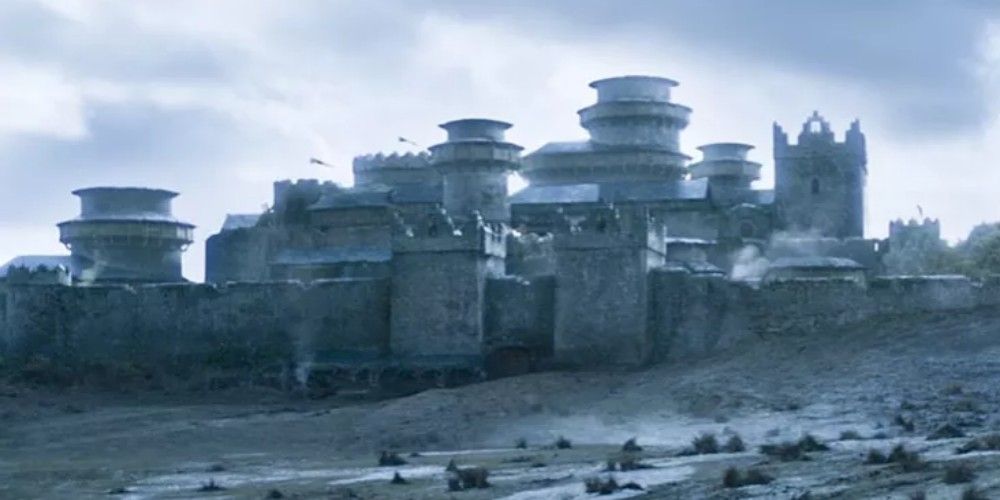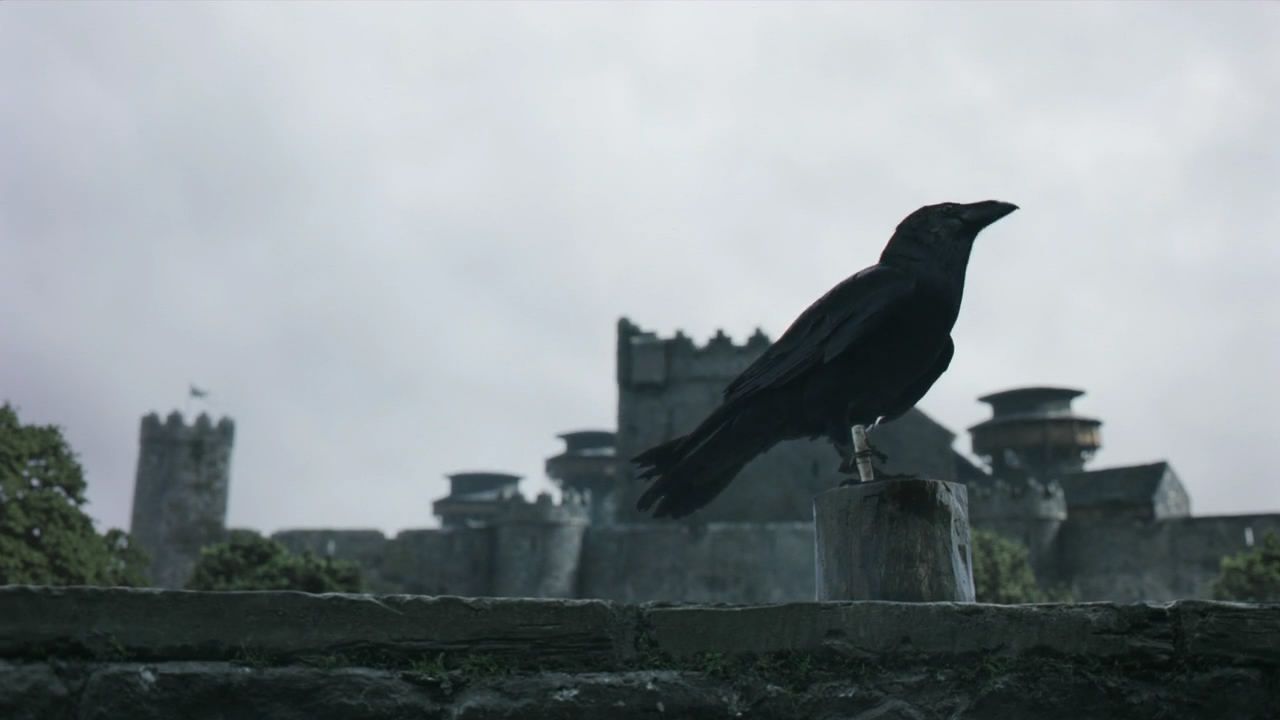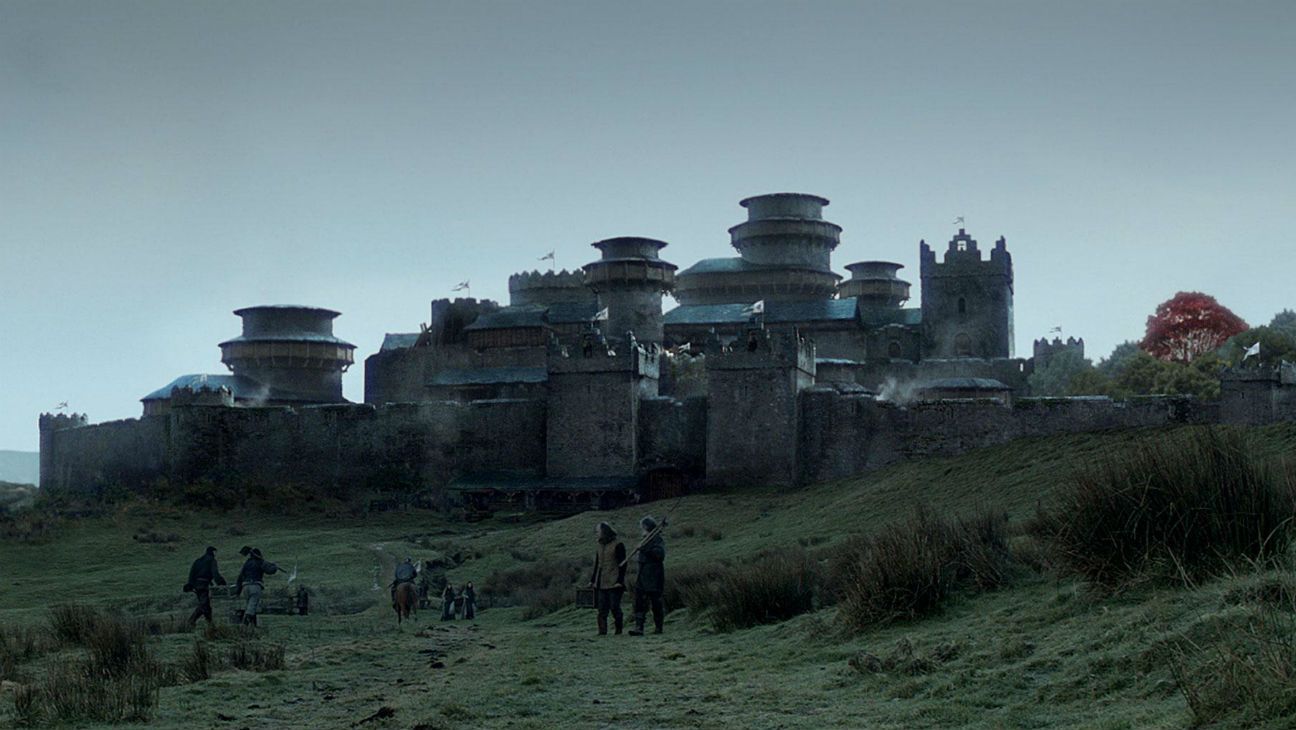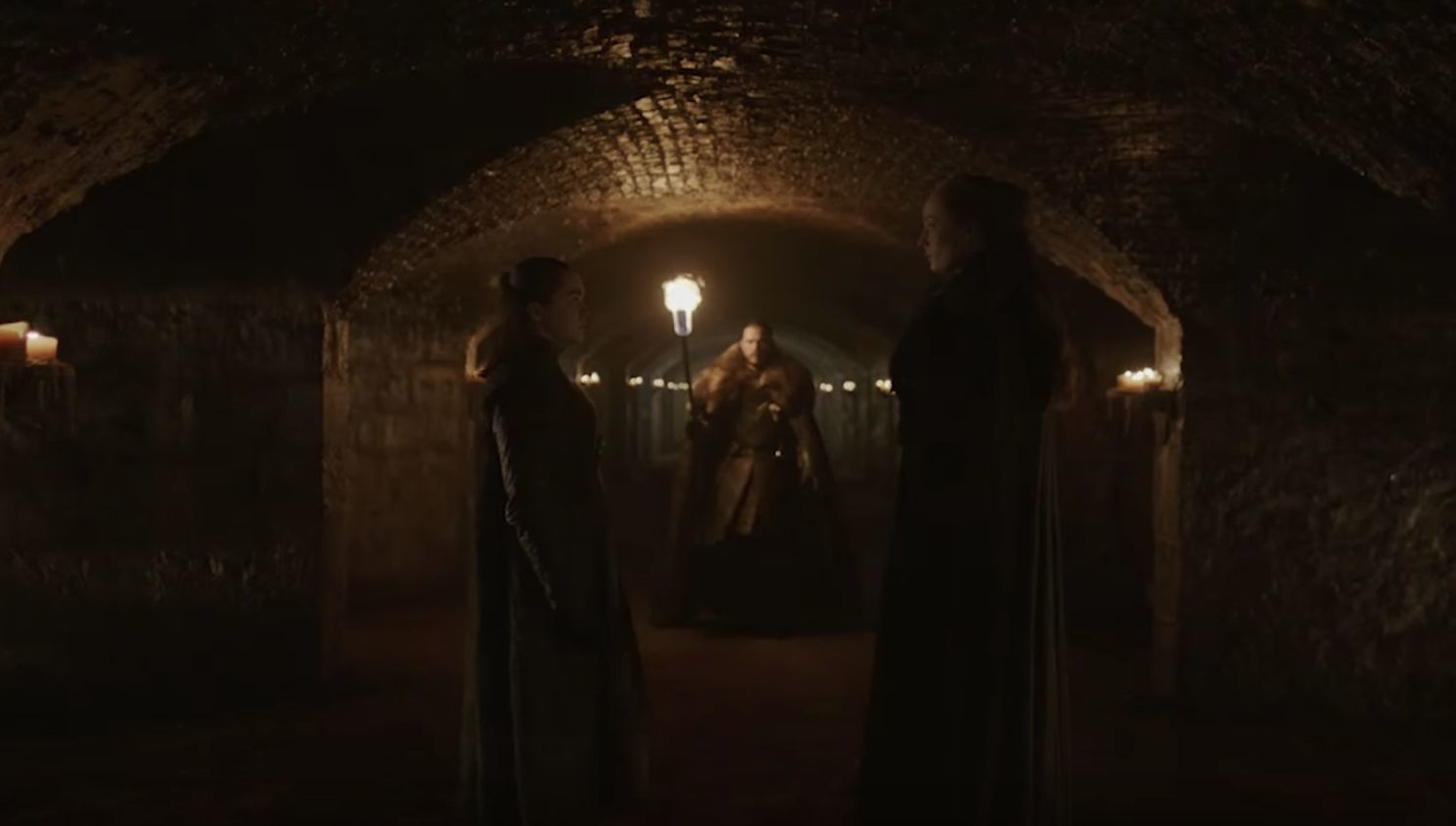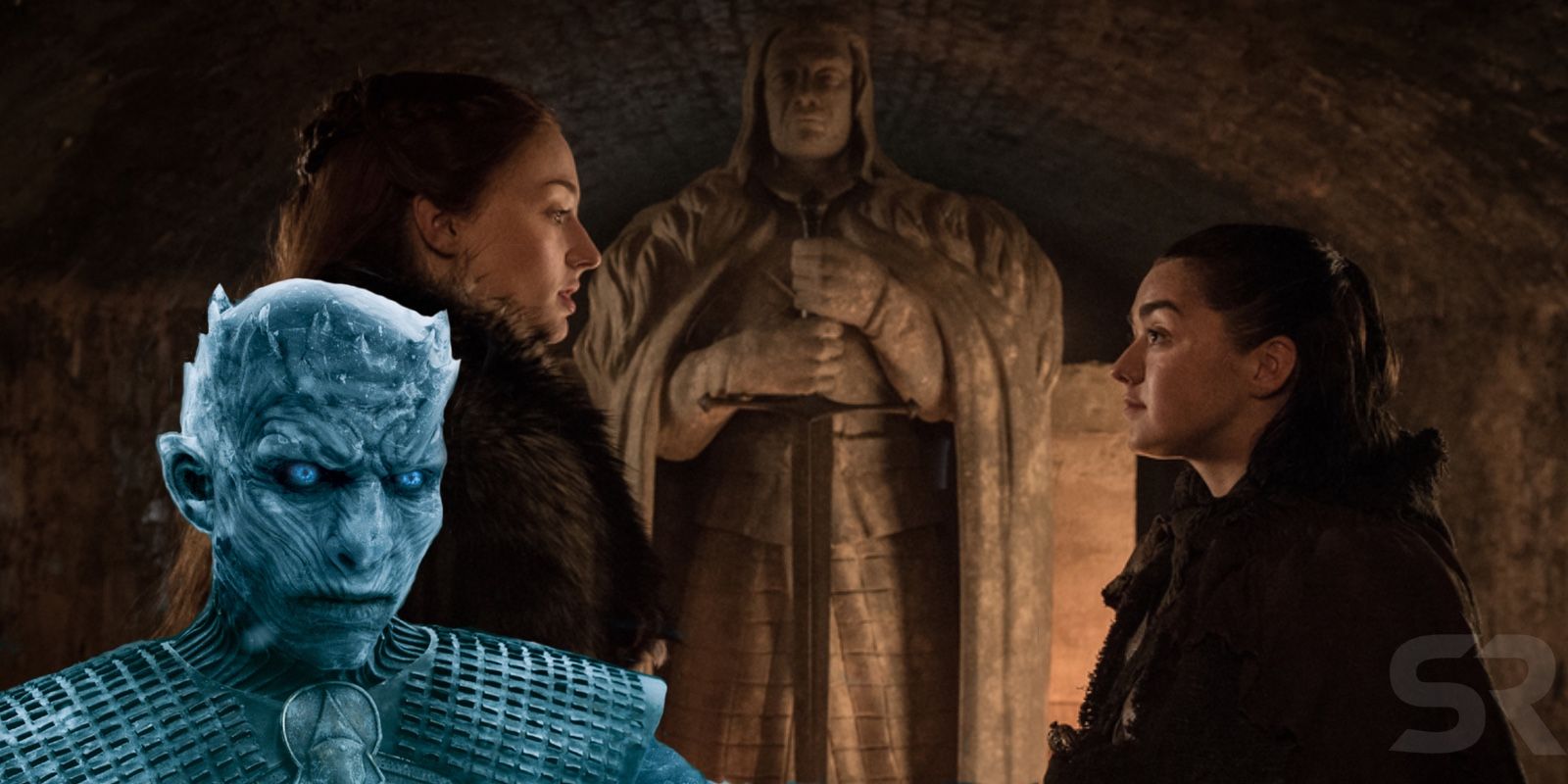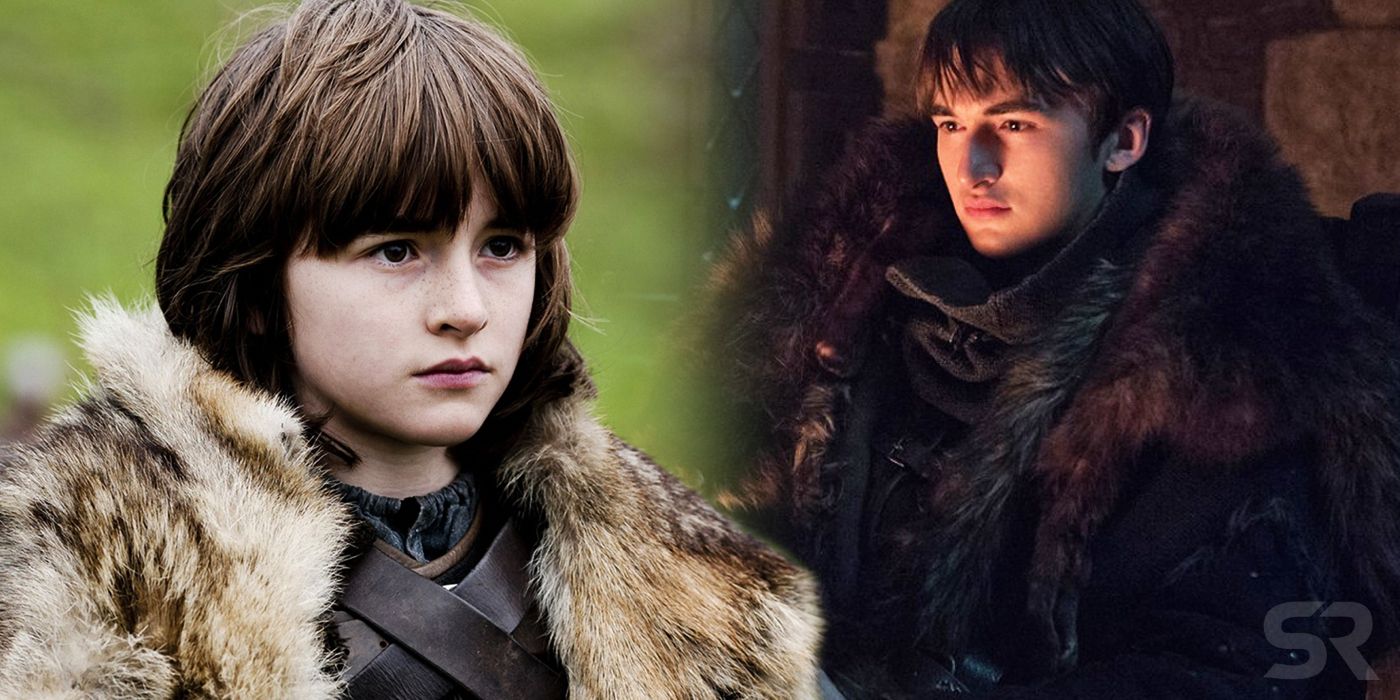Winterfell has loomed large over the central plot of Game of Thrones for as long as it’s been in syndication. The keep of House Stark, the noble family in the North whose ancestors have kept the White Walkers at bay for thousands of years, it stretches for multiple acres and has been the site of both copious celebrating and great tragedy. The final season of Game of Thrones brings the plot full circle, and where the members of House Stark began their journeys navigating Westeros, they must now come full circle.
While Winterfell has factored into several major Stark storylines, there are still certain mysterious aspects about the citadel that haven’t made their way from the pages of George R. R. Martin’s famous books to the screen. Discover 10 facts about Winterfell that Game of Thrones leaves out!
The Walls of Winterfell Are Enchanted
Winterfell was built by Brandon the Builder, Founder of the House of Stark, and noted for his masonry of the epic Wall that the Night Watch utilizes as their outpost against the White Walkers. “Bran” the Builder was said to have created the Wall, like he created Winterfell, with the help of the magic from the Children of the Forest, a race of ancient mystical beings.
Maester Childer explains in his ledger of the lineages and legends of the Starks that the Children of the Forest helped to make the walls of Winterfell enchanted with a collection of magic wards, so that none of the Others (White Walkers) could move past them due to the strength of the wards’ power.
Sansa Was Never Married To Ramsay At Winterfell
While Winterfell was in the hands of the Bolton family, held by Roose Bolton against a tired Baratheon army (led by Stannis Baratheon who contested the Bolton right to claim it), it wasn’t the residence of Sansa as a married woman to Ramsay Bolton. Ramsay killed his father to claim Winterfell for himself, but he wasn’t married to Sansa at the time, he was married to a fake Arya.
The fake Arya is really Jeyne Poole, Sansa’s best friend who was married off by the Lannisters to the Boltons and subsequently attacked by Ramsay. In the books, Sansa is still at the Eyrie with Littlefinger.
Winterfell Has Central Heating
Westeros is filled with the utility of medieval Europe, such as it was, and the ingenuity of magic. Nan would tell the Stark children stories about a dragon deep underground that kept Winterfell warm, but was that really the source of the drafty citadel’s heat? As much as her old wives tales inspire the imagination, there is a more practical reason Winterfell is kept so warm; hot springs!
Deep beneath the ground on which Winterfell is built, a series of warm springs have been rerouted to be pump through the walls to keep the entire castle heated. This innovative system was unfortunately burned, as Bran describes in the books, resulting in water seeping from the damaged walls.
The Crypt Is Massive
While the first season and last season of Game of Thrones has done a fairly good job at showing the interior of the crypt, a point it doesn’t seem to accurately convey is that the crypt is larger than Winterfell itself. With its multiple underground levels, not only is it as spatially large as the keep (which runs several acres), it’s also much deeper.
Past the huge ironwood door, down the long spiral staircase, the crypt opens up into a large level with an arched ceiling with stone pillars forming two orderly rows. Each space holds the tombs of fallen Starks going back eight thousand years. Starks are even buried beyond the protective walls, and there’s room for more. It’s said to be the biggest crypt in Westeros.
The Walls of the Crypt Should Be Impenetrable
The Wall in the North, presided over by the Night’s Watch to keep the White Walker forces at bay, was built by the founder of House Stark to be impenetrable. Brandon the Builder worked with the Children of the Forest to include magic wards in its masonry specifically designed to keep the undead from crossing it.
Legend also states that Bran used the magic of the wards in the masonry of Winterfell and most importantly, the crypts beneath it. The statues of fallen Stark nobility were also blessed with magic against the forces of the undead, should anyone try to raise their limbs and possess their bodies.
It May Have Been The Birthplace of Another Illegitimate Stark
While Jon Snow was thought to be the infamous bastard son of Ned Stark, there may have been another long ago in the Stark family tree. Wildlings had a story featuring Bael the Bard, known to them as a King-Beyond-the-Wall. He went to Winterfell, posed as a singer, and sought revenge against the then Lord of Winterfell for a former insult paid.
He took Stark’s daughter, and when she finally returned to Winterfell, she was with child. This was convenient because when the Stark line was almost extinct, it was her child that would go on to become Lord of Winterfell. There’s a nice symmetry to a wildling bastard saving their ungrateful family, given Jon Snow’s childhood and his romance with a wildling.
It Has Secret Tunnels Only Lords of Winterfell Know
Of all the Stark children’s initial life paths, Bran’s storyline was deemed the most unjust when he fell from a tower and broke his legs in the first season. Of course, that would be the least of his worries, and just the beginning of theirs. His curiosity in the book series, though, did have merit and yielded some useful discoveries.
When Bran the Builder initially built Winterfell, he didn’t level the earth at all. A bridge went from the fourth floor of the bell tower to the second floor of the rookery, for instance. And there was a secret series of tunnels accessible by the south gate that lead towards the north gate, only known by himself as former lords of Winterfell.
A Stark Must Always Be At Winterfell
The phrase “A Stark must always be at Winterfell” has dogged the House of Stark for generations, holding each family member to an ancient obligation to defend the family domicile and honor. The phrase is used loosely in the series to imply that if there are no Starks left in Winterfell, it will fall, but could it also have a magical meaning?
Some have argued that it was only when the Starks (associated with kings that used the same fire magic on the Wall) started to move South that the White Walkers made their move to follow suit. This is only partially true—the White Walkers moved south because they had a means to one of the fallen dragons from Season 7.
Its Ancient Roots Are Why Jon Snow Wouldn't Yield
Jon Snow was loyal to the Night’s Watch for many reasons, but one incident where he refused to leave his post had to do with Winterfell and it’s ancient ways. His father, Ned Stark, kept the belief of the ancient ways of the old gods alive and well in his household, which was the main reason why Jon Snow wouldn’t yield Winterfell to Stannis Baratheon.
In the show as well as the books, Stannis had become eclipsed by the beliefs of Melisandre and R’hllor, the Lord of Light. In the books, however, it was the return of Jon Snow’s direwolf from beyond the Wall that reminded him of the old gods, and why he couldn’t yield Winterfell.
Its Crypt Is Older Than The Castle
The oldest surviving part of Winterfell castle is known as First Keep, thought to have been built by the First Men, Bran the Builder, and the Children of the Forest. According to legends surrounding that time period, Winterfell was built after the first Long Night, some eight thousand years before the Battle of Winterfell in Season 8.
While it’s thought the oldest of the Stark lineage lies buried in the massive crypts beneath the keep, burial sites extend beyond the walls into unprotected land. Winterfell is where the First Men defeated the White Walkers, and some of their bodies have unmarked graves in the places where Winterfell was later built around.

